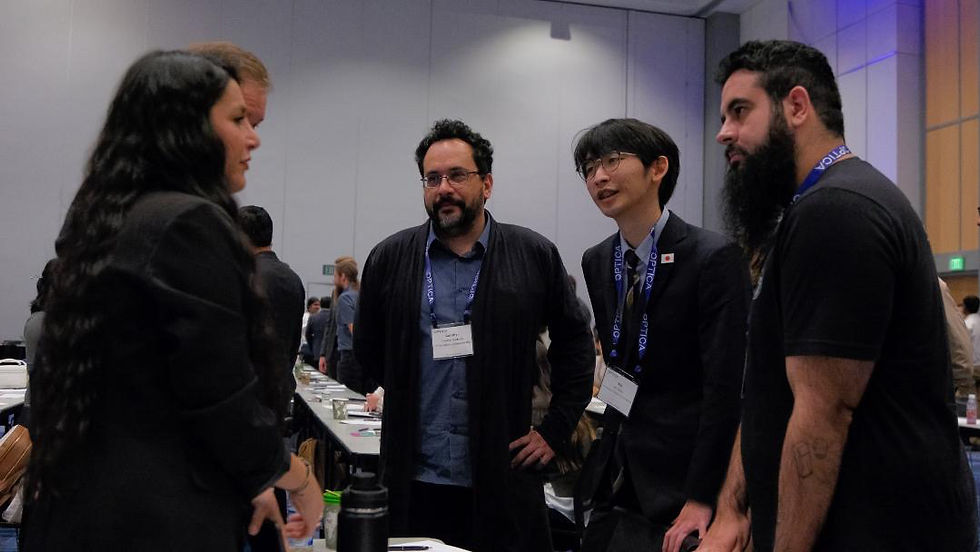A Review of Optica Student Leadership 2025
- uecosa
- 4 hours ago
- 3 min read
Hello everyone,
I’m Kei from the UEC-Optica Student Chapter, and I would like to share my experience participating in the Optica Student Leadership 2025 program.
First, let me briefly explain what Optica Student Leadership 2025 is.
This program, organized by Optica, invites 100 student members from around the world (selected through a competitive application) to attend the Frontiers in Optics (FIO) conference held in the United States. In addition to attending FIO, participants also receive leadership training on the day before the conference.
During the leadership program, invited speakers from Optica gave lectures on topics such as:
Leadership theory
How to build relationships in academia
How to secure funding and scholarships
How to develop one’s career strategically
Participants only need to pay the $150 registration fee for FIO. In return, they receive:
Round-trip airfare to the conference location (Denver, Colorado this year)
Five nights of accommodation (double room; roommates are assigned by Optica)
Full access to the FIO conference
Breakfast, lunch, and dinner on the day of the leadership training
Needless to say, being able to travel to the U.S., attend leadership sessions, and join an international conference—all for just $150—is incredibly cost-effective!
Leadership Training Overview

Here is a group photo of all the participants in the leadership training.
Impressive, isn’t it?
Students gathered from 31 different countries, truly representing all over the world. The distribution of participants based on their universities’ locations was as follows (note: this reflects university location, not nationality):

India had the largest number with 16 participants, followed by Brazil, the United States, and Mexico. However, when considering participants’ nationalities, it felt like there were even more students from India.
As for Japan, there were only two participants: myself, and another student from OIST (Okinawa Institute of Science and Technology). I was the only Japanese national among them (the OIST student is from India).
Since I was the only Japanese attendee, I would have ended up alone unless I made friends—so I actively interacted with people from various countries. Through those conversations, I learned several things:
Many participants were active members of their local student chapters.(The only requirement for application is Optica student membership.)
Compared to our UEC-Optica Student Chapter, many chapters abroad are even more active.(I thought our chapter was doing well, but the world is vast!)
Everyone uses LinkedIn for networking, so having an active account is pretty much essential.(I had an account but rarely used it.)
According to the OIST participant, there are very few applicants from Japan, so students from Japanese universities might have a higher chance of being selected.(This is unverified, but considering the emphasis on diversity and the fact that only two people from Japan attended, it might be true.)
Even though diversity and international exchange are encouraged, students tend to cluster with people from the same country or language group (e.g., Spain and Mexico). You might feel lonely at times—though I personally didn’t mind it.

Regardless, I made many friends from around the world, engaged in meaningful discussions, and learned a lot from the invited speakers. What impressed me most was how presentation styles and communication approaches can differ significantly between Japan and overseas (especially the U.S.), even when the core message is the same.
There were moments when I thought, “Wow, this is such a creative way to present!” and also times when I thought, “If someone did this in Japan, the audience might react differently.”
Looking Ahead
With what I learned from the leadership training, I hope to make the UEC-Optica Student Chapter even more active. Beyond our current on-campus activities, I now feel a stronger desire to collaborate with student chapters both in Japan and abroad.
I do have some personal impressions to share as well, but since I would also like to write about the FIO conference itself, I’ll save that for Part 2.(Though there’s a chance Part 2 may never come…)



Comments